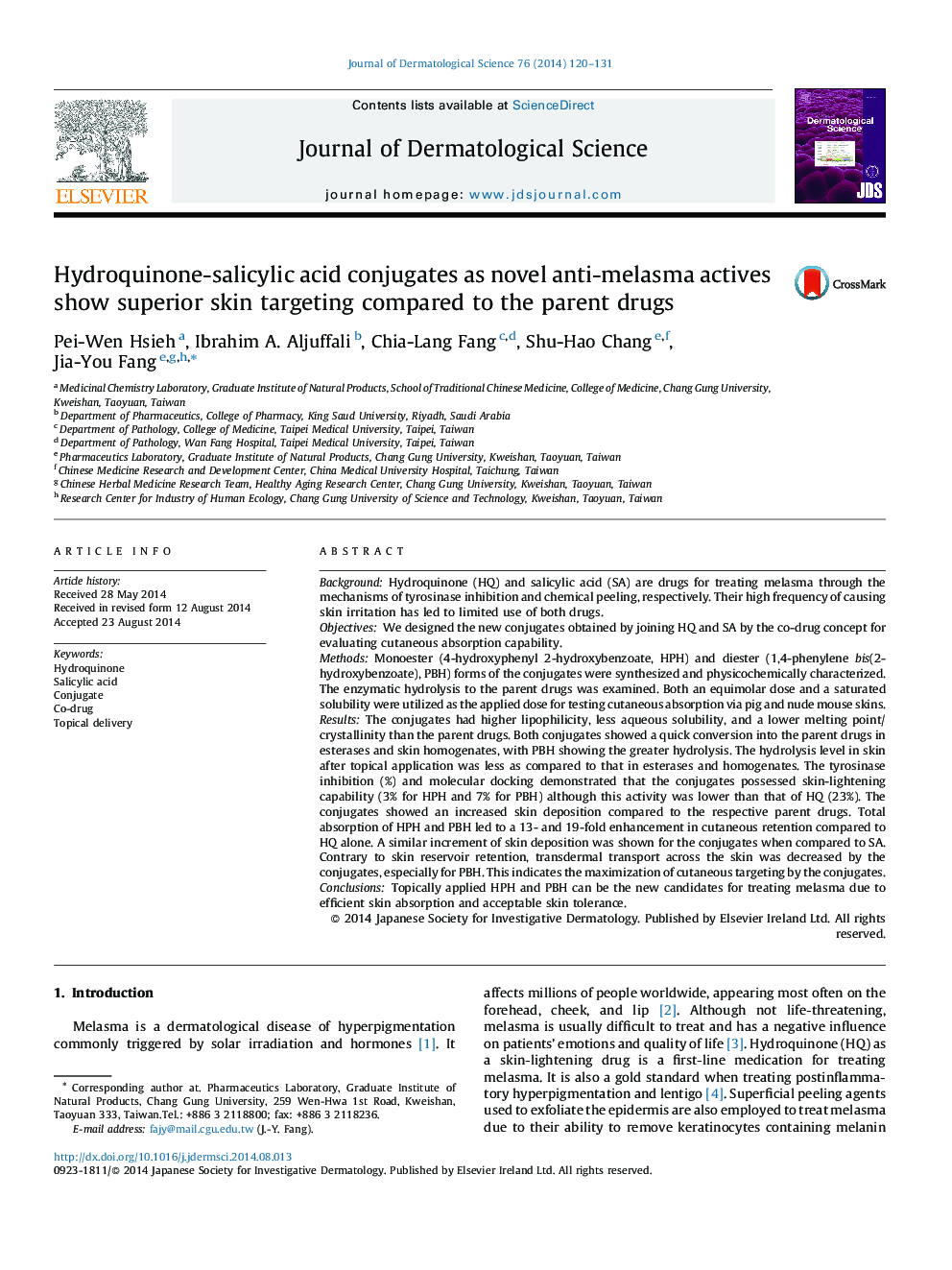| کد مقاله | کد نشریه | سال انتشار | مقاله انگلیسی | نسخه تمام متن |
|---|---|---|---|---|
| 3212713 | 1203194 | 2014 | 12 صفحه PDF | دانلود رایگان |
• Hydroquinone linked to salicylic acid was synthesized by a co-drug concept.
• The conjugates of hydroquinone and salicylic acid exhibit tyrosinase inhibition.
• A superior skin uptake of the conjugates over the parent drugs could be detected.
• The conjugates revealed an acceptable tolerance to skin physiology and structure.
BackgroundHydroquinone (HQ) and salicylic acid (SA) are drugs for treating melasma through the mechanisms of tyrosinase inhibition and chemical peeling, respectively. Their high frequency of causing skin irritation has led to limited use of both drugs.ObjectivesWe designed the new conjugates obtained by joining HQ and SA by the co-drug concept for evaluating cutaneous absorption capability.MethodsMonoester (4-hydroxyphenyl 2-hydroxybenzoate, HPH) and diester (1,4-phenylene bis(2-hydroxybenzoate), PBH) forms of the conjugates were synthesized and physicochemically characterized. The enzymatic hydrolysis to the parent drugs was examined. Both an equimolar dose and a saturated solubility were utilized as the applied dose for testing cutaneous absorption via pig and nude mouse skins.ResultsThe conjugates had higher lipophilicity, less aqueous solubility, and a lower melting point/crystallinity than the parent drugs. Both conjugates showed a quick conversion into the parent drugs in esterases and skin homogenates, with PBH showing the greater hydrolysis. The hydrolysis level in skin after topical application was less as compared to that in esterases and homogenates. The tyrosinase inhibition (%) and molecular docking demonstrated that the conjugates possessed skin-lightening capability (3% for HPH and 7% for PBH) although this activity was lower than that of HQ (23%). The conjugates showed an increased skin deposition compared to the respective parent drugs. Total absorption of HPH and PBH led to a 13- and 19-fold enhancement in cutaneous retention compared to HQ alone. A similar increment of skin deposition was shown for the conjugates when compared to SA. Contrary to skin reservoir retention, transdermal transport across the skin was decreased by the conjugates, especially for PBH. This indicates the maximization of cutaneous targeting by the conjugates.ConclusionsTopically applied HPH and PBH can be the new candidates for treating melasma due to efficient skin absorption and acceptable skin tolerance.
Journal: Journal of Dermatological Science - Volume 76, Issue 2, November 2014, Pages 120–131
